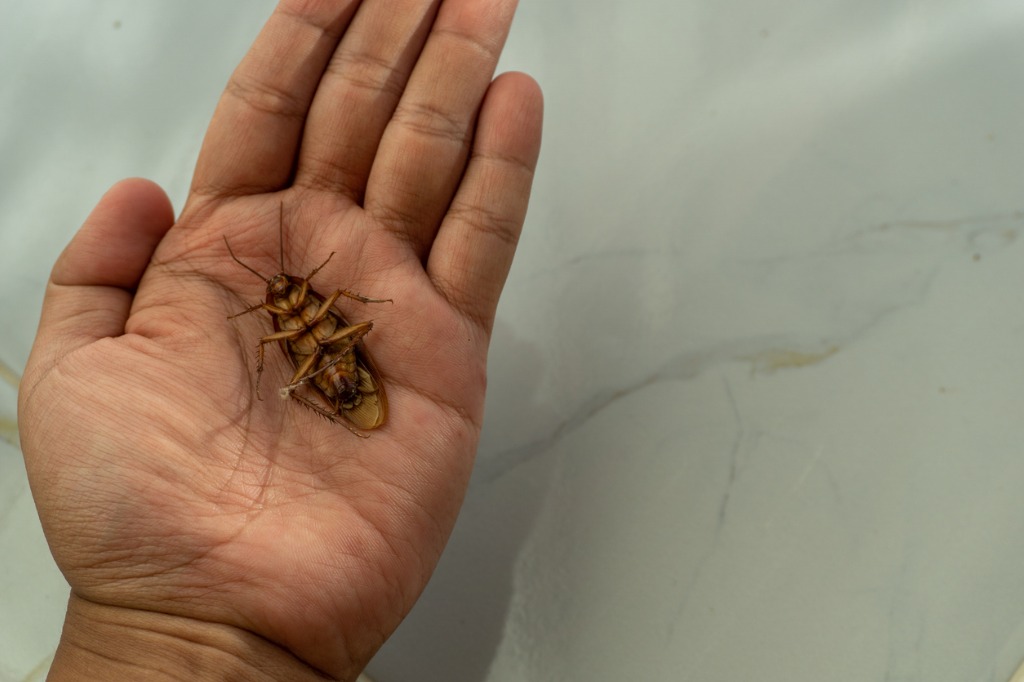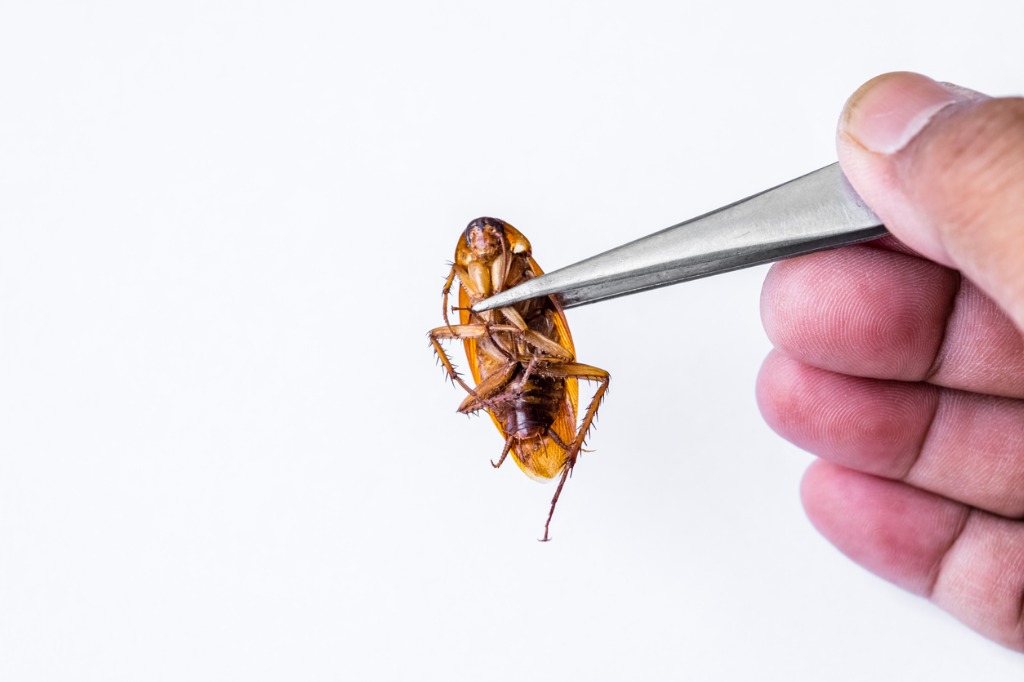Despite their reputation as persistent household pests, many people are unaware that cockroaches can and occasionally do bite humans. While such incidents are rare, understanding the identification, potential risks, and remedies for cockroach bites can provide peace of mind and ensure timely intervention. From the subtle signs of their bite marks to effective home remedies and preventive measures, this guide will furnish you with everything you need to know about these unexpected encounters with the common cockroach.
Key takeaways
- Cockroaches rarely bite humans and do so as a last resort when seeking food or moisture.
- Cockroach bites are small, red, and may resemble other insect bites, often appearing in clusters.
- Allergic reactions to cockroach bites can include severe itching, swelling, and respiratory symptoms.
- Cockroach infestations can pose health risks due to disease transmission and allergens.
- Immediate first aid for cockroach bites involves cleaning the area and using antiseptic ointment.
- Prevention includes maintaining a clean environment, sealing entry points, and using professional pest control if needed.
Why do cockroaches bite humans?
Cockroaches typically do not bite humans unless they are in dire circumstances and cannot find other food sources. Their bites are rare and are usually a last resort for obtaining nutrients. Cockroach bites can be a result of overcrowding, food scarcity, or if they are attracted to moisture or remnants of food on a person’s skin. While their bites are not typically harmful, it’s essential to maintain a clean and pest-free environment to prevent such encounters.
How can I identify a cockroach bite?

Cockroaches do not typically bite humans. However, if you suspect a bite and want to identify it, a cockroach bite is usually small, red, and may resemble other insect bites or cause localized skin irritation. It is essential to rule out other potential sources of bites, such as mosquitoes or bedbugs, as cockroaches are not primary biters of humans and are more known for transmitting diseases indirectly through their presence in unsanitary conditions. If you experience discomfort or allergic reactions, consult a medical professional for a proper evaluation and treatment.
Identification
Appearance and location of cockroach bites
Identification of cockroach bites often involves examining the appearance and location of the bites on the affected individual’s skin. Cockroach bites typically appear as small, red, inflamed bumps on the skin. They are often clustered together and may be found in areas where cockroaches are commonly present, such as kitchens, bathrooms, or areas with food debris. The bites can vary in size but are generally smaller than, for example, mosquito bites.
Distinguishing them from other bites
Distinguishing cockroach bites from other types of insect bites is essential for proper identification and treatment. Unlike mosquito bites, which tend to be more random and singular, cockroach bites are often found in groups or clusters. Additionally, cockroach bites may show signs of inflammation and infection more quickly than other bites, as cockroaches can carry bacteria on their bodies. It’s crucial to rule out other potential causes of skin irritation, such as bedbug bites or allergic reactions to different substances.
Signs of allergic reactions
Signs of allergic reactions to cockroach bites can vary from person to person but may include symptoms like severe itching, swelling, redness, and the development of hives or a rash around the bite area. In some cases, individuals with a heightened sensitivity to cockroach allergens may experience respiratory symptoms like coughing, wheezing, or shortness of breath. If someone exhibits signs of a severe allergic reaction, such as difficulty breathing or swelling of the face and throat, seek immediate medical attention as this can be life-threatening. Allergic reactions to cockroach bites can be more severe than the typical skin irritation, so it’s crucial to monitor for these symptoms and take appropriate action if they occur.
Why Cockroaches Bite

Their behavior and feeding habits
Cockroaches bite primarily as a result of their behavior and feeding habits. Cockroaches are omnivorous insects that scavenge for food in various environments, including human habitats. They are attracted to sources of food, moisture, and warmth. When they bite, it is often an attempt to obtain nourishment from substances like crumbs, food residue, or even organic matter on the skin, such as sweat or dead skin cells. Their biting behavior is usually opportunistic and driven by their need for sustenance.
Circumstances leading to bites
Several circumstances can lead to cockroach bites. These include poor sanitation and hygiene practices, which can create an environment conducive to cockroach infestations. Overcrowded living conditions, especially in urban areas, can also increase the likelihood of encounters with cockroaches and, consequently, bites. Additionally, sleeping in areas infested with cockroaches, such as in close proximity to food storage or in neglected living spaces, can result in bites. In some cases, cockroaches may bite during the night when humans are resting and unaware of their presence.
Health risks of infestations
Cockroach infestations can pose significant health risks to humans. While cockroach bites themselves are generally not a major health concern, the presence of cockroaches in large numbers can contribute to the spread of diseases and allergens. Cockroaches can carry bacteria and pathogens on their bodies and in their feces, which can contaminate food and surfaces, leading to foodborne illnesses. Additionally, the shedding of cockroach skins and their fecal matter can become airborne particles, potentially triggering allergic reactions and exacerbating respiratory problems, particularly in individuals with asthma. Therefore, addressing and preventing cockroach infestations is crucial for maintaining a healthy living environment.
Health Risks
Overview of potential health risks
Potential health risks associated with various factors can impact individuals in different ways. These risks can result from exposure to environmental hazards, pathogens, or even psychological stressors. It’s essential to understand and manage these risks for overall well-being.
Disease transmission and secondary infections
Disease transmission and secondary infections are significant health risks. Certain diseases and infections can be transmitted directly or indirectly from person to person or through contaminated surfaces and objects. Pathogens like bacteria and viruses can thrive in environments with poor hygiene and sanitation, increasing the risk of diseases such as foodborne illnesses, respiratory infections, and skin infections. Secondary infections can occur when an initial illness weakens the immune system, making individuals more susceptible to other health issues.
Psychological impact
The psychological impact on health should not be underestimated. Stress, anxiety, depression, and other mental health conditions can have adverse effects on both mental and physical well-being. Prolonged exposure to stressful situations, traumatic events, or chronic stressors can contribute to various health problems, including heart disease, digestive disorders, and compromised immune function. Additionally, mental health issues can affect one’s ability to engage in healthy behaviors, such as maintaining a balanced diet, exercising regularly, and seeking appropriate healthcare.
Remedies
Immediate first aid
Immediate first aid for bites from insects like mosquitoes or other minor sources of skin irritation typically involves cleaning the affected area with mild soap and water. This helps prevent infection. You can also apply an over-the-counter antiseptic or antibiotic ointment to the bite to reduce the risk of infection. If the bite is itchy, you can use an over-the-counter hydrocortisone cream to alleviate itching and discomfort. It’s important not to scratch the bite, as this can lead to further irritation and potential infection.
Home remedies for pain and itching
Home remedies for pain and itching from insect bites include applying a cold compress or ice pack to the affected area. This can help reduce swelling and relieve discomfort. Natural remedies such as aloe vera gel, tea tree oil, or a paste made from baking soda and water can also be applied topically to soothe itching and inflammation. Calamine lotion is another option for itch relief. Over-the-counter oral antihistamines can help with itching and allergic reactions, but it’s essential to follow the recommended dosage instructions.
Knowing when to seek medical attention
Knowing when to seek medical attention is crucial, especially for severe reactions or bites from potentially dangerous insects. You should seek medical help if you experience symptoms of a severe allergic reaction, such as difficulty breathing, swelling of the face or throat, rapid heartbeat, dizziness, or confusion. Additionally, if the bite becomes infected (signs include increased redness, warmth, swelling, or discharge), doesn’t improve with home care, or if you suspect the bite is from a venomous or disease-carrying insect, it’s best to consult a healthcare professional promptly.
Prevention strategies
- Using insect repellent: Apply an EPA-approved insect repellent to exposed skin and clothing when spending time outdoors, especially in areas where insects are prevalent.
- Wearing protective clothing: Cover your skin with long sleeves, pants, socks, and a hat when in areas with a high risk of insect bites.
- Avoid peak activity times: Many insects are most active during dawn and dusk, so try to stay indoors during these times.
- Removing standing water: Mosquitoes breed in stagnant water, so eliminate sources of standing water around your home.
- Installing screens: Use screens on doors and windows to keep insects out of your home.
- Taking precautions when camping: Use mosquito nets and wear appropriate clothing when camping in areas with a high risk of insect bites.
Prevention
Maintaining a clean environment
- Regularly clean your living or working spaces, including floors, countertops, and dining areas, to remove food crumbs, spills, and residues that can attract pests.
- Dispose of trash promptly and ensure garbage cans have tight-fitting lids to prevent easy access for pests.
- Clean and sanitize kitchen appliances, such as stoves, microwaves, and refrigerators, to eliminate food remnants and odors.
- Keep outdoor areas clean by removing debris, fallen leaves, and standing water, as these can provide breeding grounds for pests like mosquitoes.
Sealing entry points
- Carefully inspect your property for any cracks, gaps, or holes in walls, foundations, doors, and windows.
- Seal these openings with appropriate materials, such as caulk, weatherstripping, or wire mesh, to prevent pests from entering your home or building.
- Pay special attention to potential entry points near utility lines, pipes, and vents, as these are common pathways for pests.
Professional pest control
- Pest control professionals have the expertise to identify specific pest issues and develop tailored treatment plans.
- They use a variety of methods, such as insecticides, traps, and baits, to address pest problems safely and effectively.
- Regular inspections and preventive treatments by professionals can help maintain a pest-free environment over the long term.
Food storage and hygiene
- Store food items in sealed, airtight containers to prevent pests from accessing them. This is particularly crucial for grains, cereals, and pantry staples.
- Keep fruits and vegetables in the refrigerator or sealed containers to deter fruit flies and ants.
- Clean up food spills and crumbs immediately, especially in areas where you prepare and consume food.
- Ensure that pet food is stored securely and not left out overnight, as it can attract pests like ants and rodents.
Conclusion
While cockroach bites are rare and not typically a cause for concern, it is important to be able to identify them in order to seek appropriate treatment if necessary. Knowing the signs of a cockroach bite, such as redness, swelling, and itching, can help distinguish it from other insect bites. Additionally, understanding the common areas where cockroaches infest can aid in preventing future bites. Remember to keep your home clean and free of food debris to discourage these pests from making themselves at home. If you suspect a cockroach bite or have any concerns about your health, it is always best to consult with a healthcare professional. Take proactive measures to protect yourself and your home from these unwanted visitors.
FAQs
How can I prevent cockroach bites?
Cockroaches do not typically bite humans, and their primary threat lies in spreading diseases through contaminated environments. To prevent encounters with cockroaches, maintain a clean and clutter-free living space, seal cracks and openings, store food in secure containers, and employ effective pest control measures if an infestation is suspected. This will not only reduce the likelihood of any contact but also promote a healthier and more hygienic living environment.
How can I prevent cockroach bites while sleeping?
Cockroaches do not generally bite humans, especially while sleeping. However, to create a more comfortable and pest-free sleeping environment, ensure your bedroom remains clean and free from food debris, seal any cracks or openings, and consider using screens on windows and doors to keep them out. These measures should help minimize any potential encounters with cockroaches while you sleep.
How can I treat a cockroach bite?
Cockroach bites are rare, and they typically don’t require specific treatment. If you’re bitten, clean the affected area with soap and water to reduce the risk of infection. Applying an antiseptic ointment and keeping the wound covered with a sterile bandage can help promote healing. If you experience any signs of an allergic reaction or infection, such as severe swelling, redness, or pus, seek medical attention promptly. It’s essential to maintain good hygiene and consider professional pest control to prevent future bites.
Can I use natural remedies to repel cockroaches?
Yes, you can use natural remedies to repel cockroaches. Some effective options include using essential oils like peppermint or cedarwood, placing cucumber or bay leaves in potential entry points, and creating a mixture of baking soda and sugar as bait. These natural methods may help deter cockroaches from your home, but for severe infestations, professional pest control may be necessary for more effective and long-lasting results.
Can cockroaches bite pets?
Yes, cockroaches can occasionally bite pets, particularly if they are hungry and no other food sources are readily available. While their bites are generally not dangerous, they can cause irritation and discomfort for your pets. To prevent this, maintain a clean living environment for your pets, ensure their food is stored securely, and address any cockroach infestations in your home to minimize the risk of bites and potential health issues for your pets.

